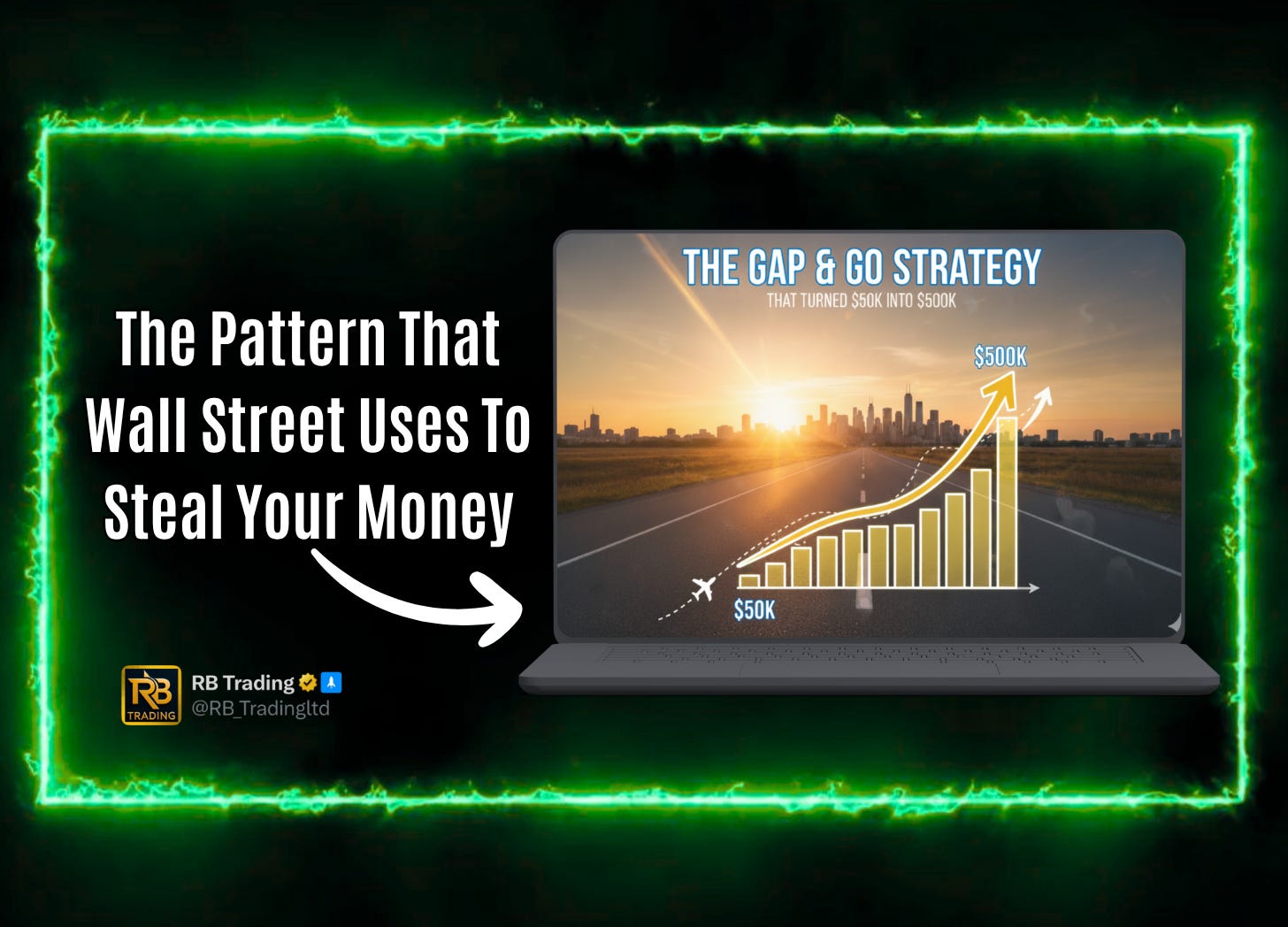The Gap & Go Strategy That Turned $50K Into $500K
The Pattern That Wall Street Uses To Steal Your Money
There’s a trading strategy so elegant, so devastatingly effective, that it’s responsible for creating more stock market millionaires than any complex system ever could.
It doesn’t use 47 indicators. It doesn’t require a PhD in mathematics. It doesn’t involve insider information or algorithm front-running.
It uses price gaps. Empty spaces on a chart that most traders ignore.
And the rule is brutally simple: When a quality stock gaps down in an uptrend, you buy the panic.
That’s it. That’s the entire strategy that’s created generational wealth for thousands of disciplined traders.
Let me show you exactly how gaps work, why they happen, and how professional traders use them to systematically extract profits while retail traders panic and sell at the worst possible time.
What Gaps Are (And Why They’re Money Magnets)
A gap happens when a stock closes at one price and opens at a significantly different price the next day, leaving a visible “gap” on the chart where no trading occurred.
Look at any stock chart and you’ll see them. Empty spaces. Voids. Places where price jumped without any candles connecting the dots.
Most traders see gaps and think: “Uh oh, something’s wrong.”
Professional traders see gaps and think: “There’s my entry.”
Here’s what they understand that retail doesn’t:
Gaps are emotional events captured in price.
Every gap tells a story:
Someone panicked
Someone got greedy
Someone made a decision based on fear or FOMO
No real price discovery happened just pure emotion
And here’s the key insight that changes everything:
Gaps act as magnets. Stocks tend to return to gap levels.
Why? Because gaps represent price levels where no buyers and sellers met and agreed on value. The market naturally wants to return to those levels to establish true value.
Professional traders call this “filling the gap.”
Why Gaps Happen (The Three Types You Need To Know)
Not all gaps are created equal. Understanding which type you’re looking at determines whether you buy, sell, or do nothing.
Type 1: Breakaway Gap
What it is: Stock gaps up or down on major news, breaking out of a range or pattern.
What it means: A new trend is starting. High momentum. Often doesn’t fill for weeks or months.
How to trade it: If it’s a breakaway gap UP in a quality stock, you’re buying the first pullback. If it’s a breakaway gap DOWN breaking support, you stay away.
Example: Stock trades between $45-50 for months. Earnings report crushes expectations. Stock opens at $55. That $50-55 gap signals a new uptrend beginning.
Type 2: Runaway Gap (Continuation Gap)
What it is: Stock gaps in the direction of an existing trend, showing strong momentum.
What it means: The trend is accelerating. Big money is still buying (or selling). Usually fills partially but not completely.
How to trade it: Mark it on your chart. If price returns to test this gap and holds, it’s a powerful entry for continuation.
Example: Stock is in uptrend at $60. Good news hits. Gaps to $65. Runs to $70. Pulls back to $66 (testing the gap). Bounces. That’s your entry.
Type 3: Exhaustion Gap
What it is: Final gap before a reversal. Happens near the end of a major move.
What it means: The trend is ending. Late buyers are FOMOing in. Smart money is distributing.
How to trade it: Be cautious. If you’re long, consider taking profits. Not an entry point.
Example: Stock has run from $50 to $85. Gaps to $90 on hype. Stalls. Reverses. That gap at $85-90 was exhaustion.
The Gap & Go Strategy (How Professionals Buy The Panic)
Here’s the exact framework that turned $50K into $500K for me over the past few years.
It’s simple. It’s repeatable. It works in any market condition.
Keep reading with a 7-day free trial
Subscribe to Inside the Trade: to keep reading this post and get 7 days of free access to the full post archives.



